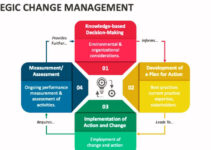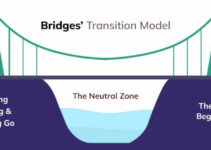Leadership style outlines the behavior, attitude, and strategic approach of leaders while communicating, managing, directing, and motivating their staff and employees. The leadership style of leaders and people would tell how they plan and implement strategies to satisfy the expectations and well-being of the staff and employees. Today, we’ll discuss the top 10 types of leadership styles in organizational behavior; and types of leadership styles in workplace or project management.
Top 10 Types of Leadership Styles in Organizational Behavior
Let’s discuss the top 10 types of leadership styles in organizational behavior or types of leadership styles in workplace or project management; they’re as follows;
Pacesetting Leadership Style
The pacesetting leaders focus on developing ambitious standards for their team and expecting them to satisfy their goals and objectives as they have described them. Such leaders demand high-quality productivity and results from their employees; they jump in to make sure that they’re doing their jobs correctly.
Highly skilled and professional leaders would perform well under this type of leadership style. They utilize the skills and expertise of their professional team members and develop their goals and objectives. Employees would feel grateful that their leader is working alongside them, rather than just ordering them.
I-Traits
- Efficiency and speed preference
- Result-oriented
- Leading by example
- Setting high performance standards
II-Challenges
- Setting unrealistic goals
- Creating a workplace environment stressful
- Difficult for employees to satisfy goals
- Pressure makes them feel burnout
- Jeopardize their creativity by overly focusing on creativity
Visionary Leadership Style
The focus of visionary leaders is on achieving long-term. Their objective is to inspire and guide their employees toward achieving the shared vision. Such leaders would focus on teamwork, emotional intelligence, coordination, and collaboration. They develop such workplace culture that focuses on innovation and creativity by motivating the staff to adopt new ideas.
I-Traits
- Setting clear goals and objectives
- Persuasive and effective communication
- Motivating the team towards growth
- Predicting potential issues and setting action plans
- Boosting their morale and confidence
II-Challenges
- Avoiding daily issues for the sake of long-term goals
- Neglecting roadblocks that would cause future problems
- Over-emphasis on one goal and avoiding others
Bureaucratic Leadership Style
The focus of bureaucracy is on following rules and regulations. They listen and pay heed to the feedback of employees. They would reject any such idea or input that goes against the company’s policy. It is highly beneficial for such businesses and companies if their existing strategies are successful.
I-Traits
- Limited independence and autonomy
- Strict chain of command
- Strictly following the rules and regulations
- Centralized decision-making process
- Job security, predictability
- Limited risk of favoritism
II-Challenges
- Employees don’t feel controlled
- Limited freedom about their roles
- No innovation
- Not suitable for ambitious companies that want quick growth
Conscious Leadership Style
The focus of conscious coaching is recognizing and nurturing the strengths of team members and employees and helping them to perform better. It has a great resemblance with democratic and strategic leadership styles, and it focuses on the success of employees.
I-Traits
- Discussing constructive feedback on the meeting
- Providing guidance
- Giving new tasks and activities
- Boosting their morale to learn new skills
- Trusting relationship with employees
- Open communication
II-Challenges
- Time-consuming
- Not suitable for every team member and employee
- Some don’t like mentoring
Transactional Leadership Style
Transactional leaders focus on offering rewards and punishments for directing and motivating their behavior. They set clear rules and regulations by carefully analyzing their performance. However, if employees achieve their goals, they inform them about the potential rewards; and vice versa if they don’t.
I-Traits
- Maintaining status quo
- Making sure employees follow the standards to meet goals
- Structuring their team
- Develops a system of rewards and penalties
- Offer clarity and expectation structure
II-Challenges
- Not building trusting relationships with employees
- Not coaching and mentoring to boost their morale
- Difficult to connect with a diverse team
- Limited creativity
- Fear of penalties impacts their performance
Transformational Leadership Style
The focus of transformational leaders is to develop trusting relationships with employees and encourage them to satisfy their goals and objectives. They motivate employees and improve the company’s convention toward growth and skill development.
I-Traits
- Inspiring employees to be innovative
- Updating processes to achieve profitability and productivity
- Higher morale and employee satisfaction level
- Supporting team member to improve their capabilities
II-Challenges
- Losing sight of employees’ learning curve
- Employees feel stressed out
Strategic Leadership Style
Strategic leaders play a middle role between the growth opportunities and operations of the company. Such leaders demand adaptability, awareness, and vision. However, they keep in mind the obligation of the executive role and make sure the stable working conditions for everyone. (Types of leadership styles in workplace and project management)
I-Traits
- Directing team toward long term goals
- Forward-thinking and agile
- Transparency
- Collaboration
- Productivity
- Accountability
II-Challenges
- Taking a lot of risks
- Overthinking about future
- Avoiding daily tasks and responsibilities
- Not sharing the role of decision-making
Laissez-Faire Leadership Style
Laissez-faire is a French term and it means limited interference and letting employees and team members do their role. Such types of leaders offer all the power and authority to employees and don’t interfere with them unless they need it.
I-Traits
- Trusting and empowering employees
- Freedom and autonomy
- Limited control and interference
- Limited feedback, direction, guidance
- Offering incentives to perform better
II-Challenges
- Limited team building and development
- Difficult for new and inexperienced employees
- Unclear roles and responsibilities
- Promoting solo working
- Avoiding critical growth elements
Autocratic Leadership Style
The focus of autocratic leaders is to set goals and make decisions without thinking about or consulting with employees and team members. They’re the opposite of the democratic form of leaders.
I-Traits
- Resistance to criticism and feedback
- Focus on status quo and hierarchy
- Limited independence of team members
- Lower delegation
- Top-to-down communication
- Centralized decision making
II-Challenges
- Overreliance on one person
- Micromanagement issues
- Intimidating environment
- No consultation
- Limited creativity
- Lower creative decision-making
Democratic Leadership Style
The focus of democratic leaders is to make decisions and set goals by receiving the concerns of employees. They make the final decision by bringing everyone on board.
I-Traits
- Emotional intelligence
- Trust building
- Empathetic and supporting
- Empowering
- Open communication
- Collaboration
- Inclusion
II-Challenges
- Time-consuming
- Wastage of resources
- Impacting decisions because the team doesn’t have the expertise
Conclusion: Top 10 Types of Leaderships in Organizational Behavior
After an in-depth study of the top 10 types of leadership styles in organizational behavior; we have realized leadership style plays a key role in the workplace. If you are learning about the types of leadership styles in the workplace and project management; then you should keep in mind the abovementioned leadership styles in the workplace.
Ahsan is an accomplished researcher and has a deep insight in worldly life affairs. He goes Live 3 days a week on various social media platforms. Other than research writing, he’s a very interesting person.


